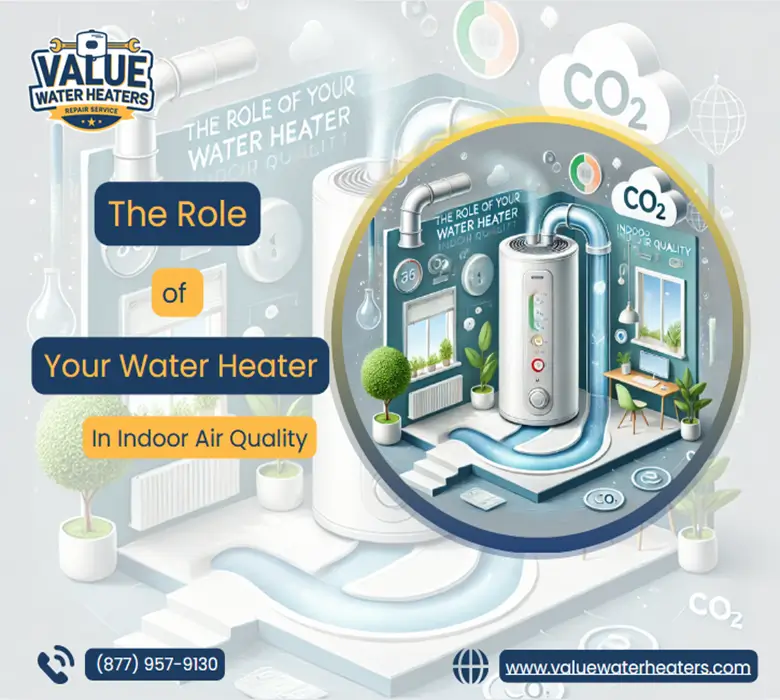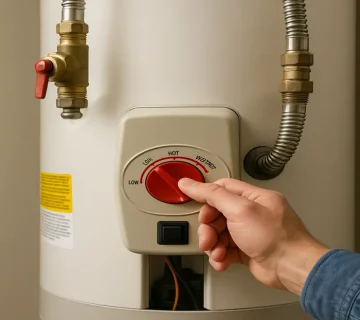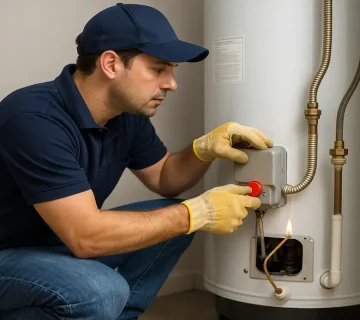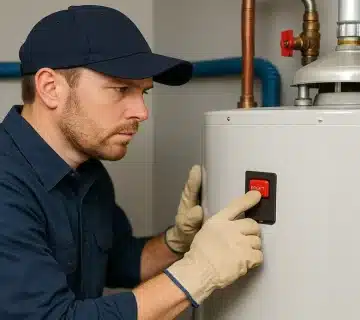Water heater and indoor air quality are closely connected, yet many homeowners overlook the impact their water heater has on the air they breathe. Gas-powered units, ventilation issues, and carbon monoxide leaks can pose serious health risks. Understanding how your water heater affects air quality can help you create a safer, healthier indoor environment.
In this article, we’ll explore five critical ways your water heater impacts indoor air quality and provide solutions to improve air safety in your home.
1. Water Heater and Indoor Air Quality: Carbon Monoxide Risks
One of the biggest risks associated with water heater and indoor air quality is carbon monoxide (CO) exposure. Gas water heaters can produce CO gas if:
- The unit is improperly vented, allowing fumes to escape into living spaces
- The burner is clogged, leading to incomplete combustion
- The exhaust flue is blocked, preventing proper ventilation
Carbon monoxide poisoning can cause headaches, dizziness, nausea, and even death if exposure is prolonged. Since CO is odorless and colorless, it can go undetected until symptoms appear.
Solution:
- Install carbon monoxide detectors near the water heater and sleeping areas
- Ensure your venting system is clear and properly installed
- Schedule annual inspections to check for gas leaks and vent blockages
If you ever smell gas near your water heater, evacuate immediately and contact a professional technician to inspect the system.
2. Water Heater and Indoor Air Quality: Humidity and Mold Growth
Excess moisture from water heaters can contribute to high indoor humidity, which encourages mold growth and worsens air quality. Common causes include:
- Leaking tanks or pipes creating damp conditions
- Poor ventilation, allowing moisture to build up
- Condensation around the heater, leading to mildew
High humidity can lead to musty odors, mold spores, and respiratory issues, especially for individuals with asthma or allergies.
Solution:
- Fix leaks immediately and check for standing water around the heater
- Use a dehumidifier if humidity levels exceed 50 percent
- Ensure proper ventilation in your utility room
- Keep the area around the water heater dry to prevent mold formation
3. Water Heater and Indoor Air Quality: Gas and Fume Leaks
Gas water heaters release combustion byproducts such as nitrogen dioxide, carbon monoxide, and sulfur dioxide. If leaks occur, they can lower indoor air quality and cause health issues.
Symptoms of exposure to combustion gases include:
- Shortness of breath
- Eye and throat irritation
- Fatigue and dizziness
Solution:
- Have a licensed professional inspect your gas lines for leaks annually
- Ensure proper exhaust ventilation to safely remove combustion gases
- Upgrade to a tankless or electric water heater to eliminate gas emissions
4. Water Heater and Indoor Air Quality: Dust and Allergen Circulation
Older water heaters and HVAC systems can spread dust, dander, and allergens into indoor air, aggravating respiratory conditions. This occurs when:
- Air intake vents are dirty, circulating pollutants
- Ductwork is contaminated, trapping airborne particles
- Water heater vents are clogged, reducing proper airflow
If you notice increased dust levels or worsening allergies, your water heater might be contributing to poor indoor air quality.
Solution:
- Clean or replace HVAC and water heater filters regularly
- Inspect ductwork and vents for dust buildup
- Consider a whole-house air purifier to reduce airborne allergens
5. Water Heater and Indoor Air Quality: Ventilation and Safety Concerns
A poorly ventilated water heater can cause stale air, excessive humidity, and gas buildup. This is especially problematic in small, enclosed utility rooms.
Signs of poor ventilation include:
- Foggy windows or condensation
- Unpleasant odors lingering indoors
- Slow-burning pilot light (for gas models)
Solution:
- Ensure vent pipes are properly sized and installed
- Keep the area around your water heater clear to allow airflow
- Upgrade to a high-efficiency water heater with advanced ventilation
Proper ventilation is key to maintaining healthy indoor air quality while preventing safety hazards.
When to Seek Professional Help
If you experience persistent air quality issues, unusual smells, or gas-related symptoms, it’s time to consult an HVAC or plumbing expert. Signs that require immediate attention include:
- A strong gas odor near your water heater
- Soot or discoloration on the unit’s vent
- Frequent CO detector alarms
- Sudden unexplained health symptoms
A professional inspection can help identify leaks, ventilation issues, and inefficiencies, ensuring both safety and better air quality.
Final Thoughts on Water Heater and Indoor Air Quality
Your water heater and indoor air quality are directly linked, impacting carbon monoxide levels, humidity, and overall home safety. By taking preventive measures—such as improving ventilation, checking for leaks, and upgrading inefficient systems—you can create a healthier living environment.
For expert water heater maintenance and installation, visit our website. You can also find us on Google Maps, Bing Maps, Yahoo Local, or check customer reviews on Yelp.





